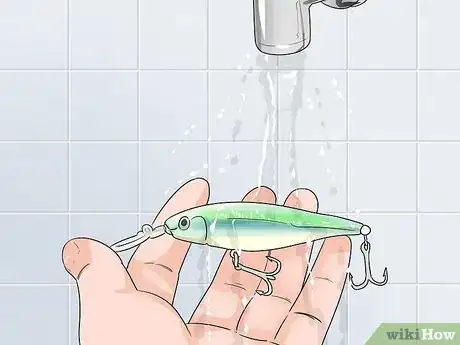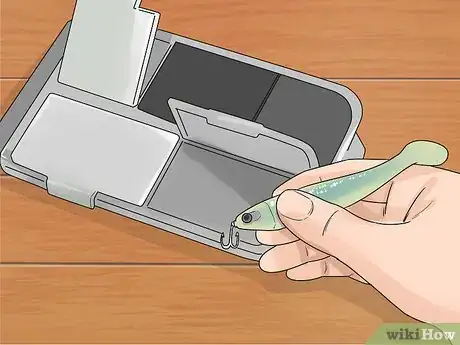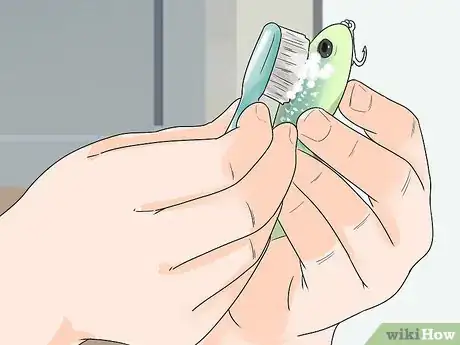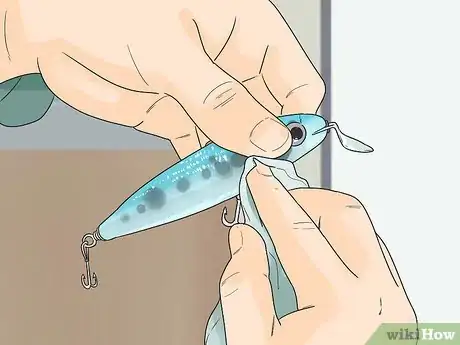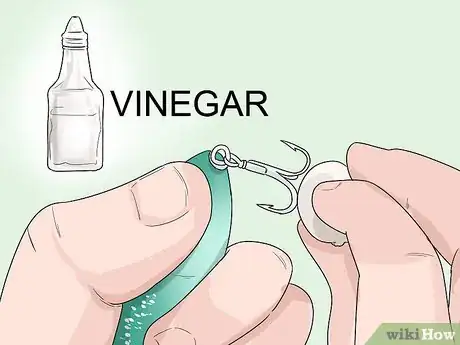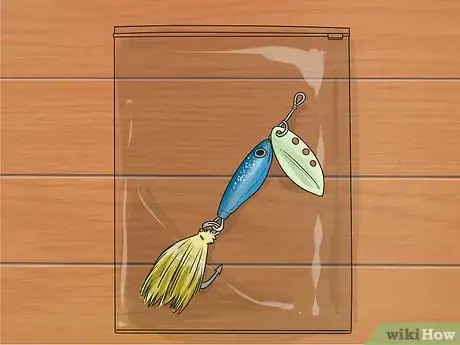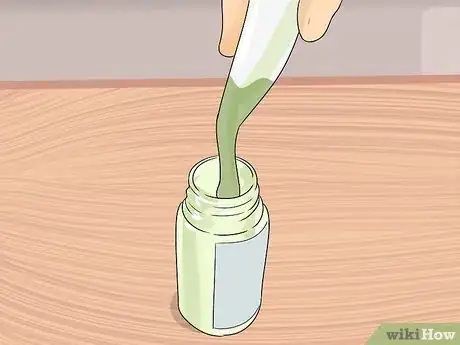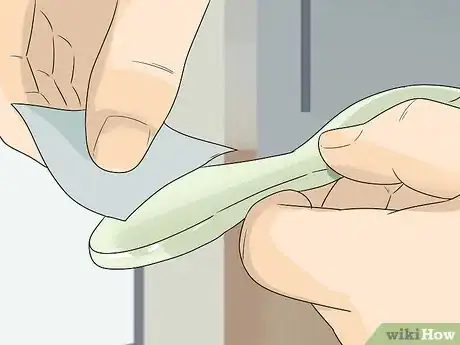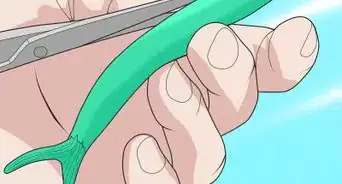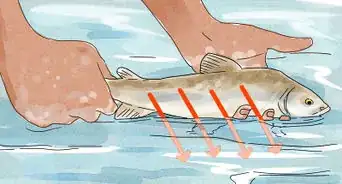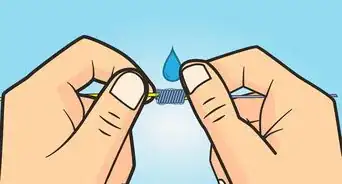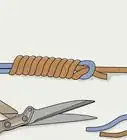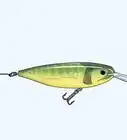X
This article was co-authored by wikiHow Staff. Our trained team of editors and researchers validate articles for accuracy and comprehensiveness. wikiHow's Content Management Team carefully monitors the work from our editorial staff to ensure that each article is backed by trusted research and meets our high quality standards.
This article has been viewed 20,268 times.
Learn more...
A lot of fishermen treat lures as disposable.[1] Water, especially saltwater, can corrode them, slowly making them unusable. But with some simple maintenance, you can extend the lives of your lures. Keep them dry whenever possible and remove saltwater as quickly as you can.
Steps
Method 1
Method 1 of 2:
Caring for Your Lures on a Trip
-
1Wash saltwater lures with freshwater as you fish. To minimize damage from saltwater, you should remove the lure from the water occasionally during your trip. Dunk it in some fresh water. Then use a paper towel to dry it off.[2]
-
2Store wet lures separately. Freshwater won’t damage your tacklebox as badly as saltwater, but there is no reason to get it wet if you don’t have to. Store your wet lures separately on the drive back home. Saltwater lures should not go back into the tacklebox until they have been cleaned.Advertisement
-
3Use a toothbrush and gentle soap to wash the lure. An all-purpose soap or hand soap is ideal. Use a wet toothbrush to apply the cleaner to the hard to reach spots.
-
4Wipe the lure with a dry towel. Use a towel to dry all the hard to reach spots on the lure. Then, you can return the lure to its tacklebox.
Advertisement
Method 2
Method 2 of 2:
Performing Advanced Maintenance
-
1Use vinegar to remove rust from your hooks. Fill a container with a mixture of vinegar and salt. Place your rusty hooks in the solution and allow them to sit for at least 12 hours. After you remove it, use steel wool to scrub away any remaining rust. Then wipe it down with a rag soaked in denatured alcohol to prevent rust from forming again.
- The solution should include one cup of salt for every gallon of vinegar.[3]
-
2Remove overly corroded hooks. Hooks aren’t usually very sturdy to begin with, so if it looks like the rust has compromised the integrity of the hook, see if the hook can be removed and replaced. A pair of O-ring pliers can help you remove the old hook.[4]
- Be sure to replace it with a hook of the same weight and size so that it doesn’t impact the action of the lure.
- If you are having trouble finding a replacement hook that matches, you can find a good selection online.[5]
-
3Keep feathers in an airtight bag. If you don’t protect lures with feathers, bugs will get into the tacklebox and eat away at them. Keep lures with feathers in airtight bags. Do not remove them from their packaging until you use them.
-
4Apply tail dips to soft plastic lures. When a soft plastic lure begins to show signs of damage, you can often use tail dips to recolor it and bring it back to life. Many fishermen like to experiment with different colors of paint to see what draws the fish.[6]
- Tail dips are paints designed specifically for plastic fishing lures. You can often dip the lure directly in the paint. Other times you can drop or spray some on top of the lure.[7]
-
5Sand out imperfections in wood. When a wooden lure gets scratched, rub sandpaper over it smooth out the scratch. Then, cover it up by applying enamel or lacquer. Use a small paint brush and some paint to fill in the paint job.
Advertisement
References
- ↑ http://www.fieldandstream.com/forget-winter-clean-up-just-sell-your-old-lures
- ↑ https://1source.basspro.com/index.php/component/k2/74-saltwater-fishing/2427-keeping-saltwater-reels-rods-lures-clean
- ↑ http://www.finewoodworking.com/2014/06/05/salt-and-vinegar-natures-rust-remover
- ↑ http://www.shakespeare-fishing.com/Shakespeare-ome-spring-clean-up-preparing-your-gear-for-the-season.html
- ↑ http://tpwmagazine.com/archive/2006/jan/skillbuilder/
- ↑ http://tpwmagazine.com/archive/2006/jan/skillbuilder/
- ↑ http://www.scout.com/outdoors/wired2fish/story/1537489-why-you-should-add-more-color-to-your-lures
About This Article
Advertisement
